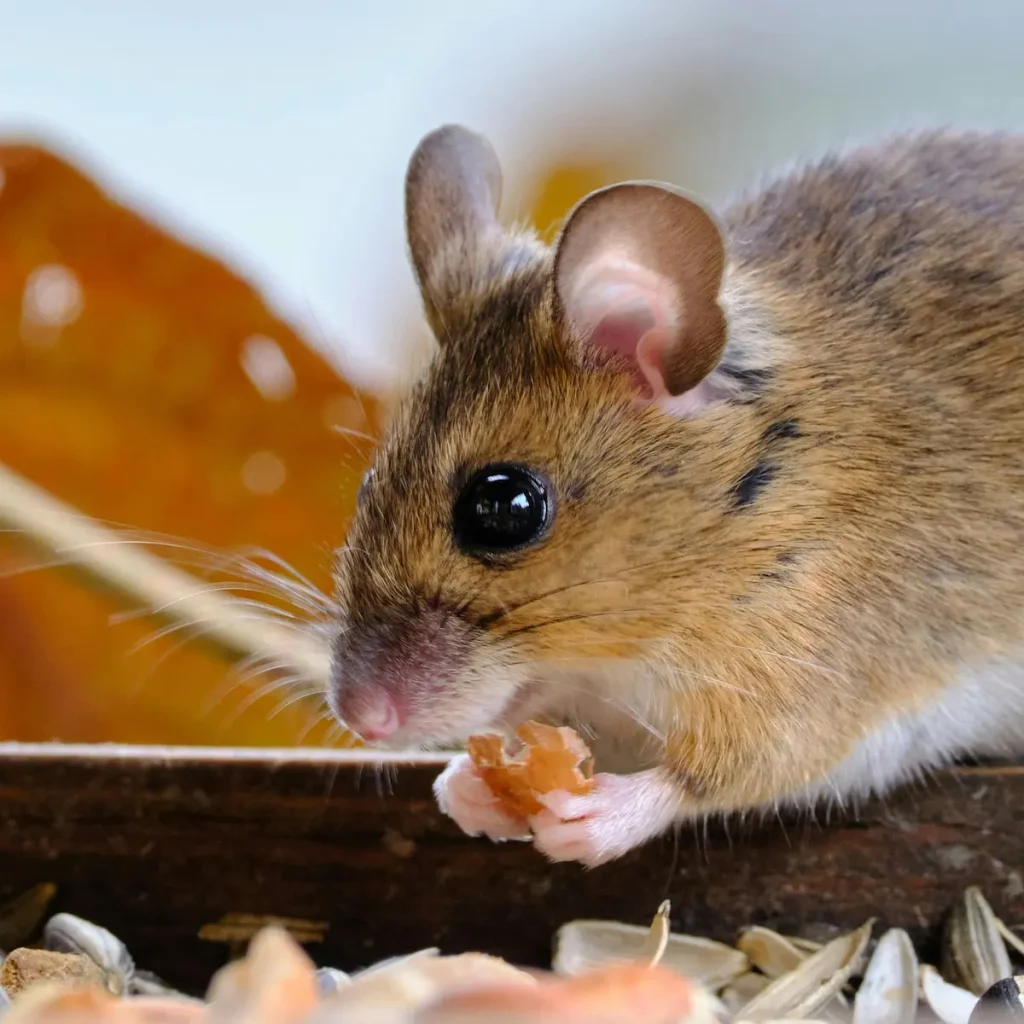As a homeowner, few things are more unsettling than discovering you have uninvited guests of the furry, four-legged variety.
Mice may be small, but they can cause significant problems once they enter your home. At Titan Pest and Wildlife Solutions, we often hear the question, “How do mice get in my house?” Let’s explore the sneaky ways these rodents find entry and what you can do to keep them out.

The Incredible Shrinking Mouse
First, it’s essential to understand how small a mouse can squeeze through a space. Adult mice can fit through openings as small as a dime – roughly a quarter-inch! Young mice can manage even tinier gaps. This extraordinary ability means that what looks like a secure home to us might appear full of open doors to a determined mouse.
Common Entry Points for Mice
Mice are opportunistic creatures, always looking for food, water, and shelter. Here are some of the most common ways they gain access to your home:
- Cracks in the Foundation: Even small cracks or gaps in your home’s foundation can serve as a mouse highway. These openings are often found where pipes or utilities enter the house.
- Gaps Around Windows and Doors: Worn weatherstripping or improperly sealed frames can create enough space for mice to slip through.
- Roof Vents and Chimneys: Uncapped chimneys or damaged roof vents provide an easy access point from above.
- Garage Doors: If your garage door doesn’t seal properly when closed, it’s practically an open invitation for mice.
- Dryer Vents: Exterior dryer vents that aren’t correctly screened can be an easy entry point.
- Holes in Exterior Walls: Rotted wood, damaged siding, or holes created for cables or pipes can all serve as entry points if not properly sealed.
- Attached Garages or Sheds: These structures often have more entry points and can serve as a stepping stone into the main house.
Why Mice Want In
Understanding what attracts mice to your home can help in prevention efforts:
- Food: Mice are constantly foraging. Open food containers, unsealed trash, or pet food can be irresistible.
- Warmth: As temperatures drop, mice seek warm shelter for nesting.
- Water: Like all living creatures, mice need water to survive. Leaky pipes or condensation can be attractive water sources.
- Nesting Materials: Mice look for soft materials to build nests. Insulation, paper, and fabrics are all appealing.
Signs of Mouse Intrusion
Even if you haven’t seen a mouse, there may be signs they’ve made it inside:
- Droppings: Small, dark droppings are often the first sign of mice.
- Gnaw Marks: Mice constantly gnaw to keep their teeth sharp. Look for marks on food packaging, wood, or wires.
- Unusual Pet Behavior: If your cats or dogs seem overly interested in a particular area, they might sense mice.
- Scratching Sounds: Particularly at night, you might hear mice moving in walls or ceilings.
Preventing Mouse Intrusions
Now that we know how mice get in let’s discuss prevention:
- Seal Entry Points: Conduct a thorough inspection of your home’s exterior. Use steel wool, caulk, or metal sheeting to seal any holes or gaps you find.
- Proper Food Storage: Store food in airtight containers and avoid leaving pet food overnight.
- Reduce Clutter: Piles of boxes, papers, or clothing can provide mice with hiding spots and nesting material.
- Maintain Your Yard: Keep grass short and remove debris piles near your home’s foundation.
- Use Mouse-Proof Materials: When sealing holes, use materials mice can’t easily chew through, like metal or concrete.
- Regular Inspections: Make exterior inspections a part of your seasonal home maintenance routine.
- Address Moisture Issues: Fix leaky pipes and work towards proper drainage around your home.
When to Call the Professionals
While these prevention methods can be effective, sometimes mouse problems require expert intervention. If you’re seeing multiple mice, finding droppings in various areas of your home, or if your DIY efforts aren’t yielding results, it’s time to call in the professionals.
At Titan Pest and Wildlife Solutions, we have the expertise and tools to remove existing mouse infestations and identify and seal potential entry points you might have missed. Our comprehensive approach aims to address your current mouse problem and help prevent future invasions.
Mice may be small, but their potential for damage and health risks is significant. By understanding how mice enter homes and taking proactive steps to prevent their entry, you can protect your home and family from these unwanted guests. Remember, when it comes to persistent mouse problems, you don’t have to face them alone. Titan Pest and Wildlife Solutions is here to help support your efforts to keep your home mouse-free.

